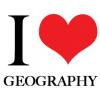- 1 reply
- 1,426 views
- Add Reply
- 1 reply
- 1,283 views
- Add Reply
- 2 replies
- 1,896 views
- Add Reply
- 1 reply
- 1,308 views
- Add Reply
- 1 reply
- 2,102 views
- Add Reply
satellite for exploration of oil or gas
By Ryan,
Is there anyone who will recommend the right satellite for exploring the oil or gas fields? 🙏🙏
Seabed Project by UN will create ocean map by 2030

By Lurker,
The U.N.-backed project, called Seabed 2030, is urging countries and companies to pool data to create a map of the entire ocean floor by 2030 which will be freely available to all.
“We obviously need a lot of cooperation from different parties – individuals as well as private companies,” said Mao Hasebe, project coordinator at the Nippon Foundation, a Japanese philanthropic organization supporting the initiative.
The project, which launched in 2017, is expected to cost about $3 billion
Software for long and cross-sections for hydrology and drainage systems
By imiltopnem,
Hi comrades,
I have been searching for a solution to deal with a problem but this is not my cup of tea so could use some help from the experts here. I am looking for software that can best deal with cross- and long-sections of river systems. Vectorworks was recommended by a friend but it involves a learning curve to master it. CAD software ( AutoCad or related) might handle that kind of task but I am not an avid user. Ideally, I would like to use temporal data of two time periods to compute
Identify tool gives no value for the raster
By Maya007,
Hello,
I was doing some operation like euclidean distance over shape file and then some raster calculator in the model of ArcMap 10.4.1. Every sequential operations like finding the euclidean distance followed by reclassifying the distances and then applying some conditional formulaes using raster calculator all worked well. BUt when i ckecked the pixel value using tool Identify, it shows as no value. But the range of value shown in the resulting raster is correct.
WHat could b
Corridor linkages
By Maya007,
Hello all,
I built corridors between core forests using the "Linkage mapper"(https://circuitscape.org/linkagemapper/) which is a tool that could be used in ArcGIS. But the final corridor image is a raster file with values based on the eqaution:
Normlaised least cost corridor value = Cost weighted distance from core forest A + Cost weighted distance from core forest B - COst weighted distance accumlated moving along the ideal path (least cost path) connecting the core forests A and B.
-
Forum Statistics
8.8k
Total Topics43.5k
Total Posts


